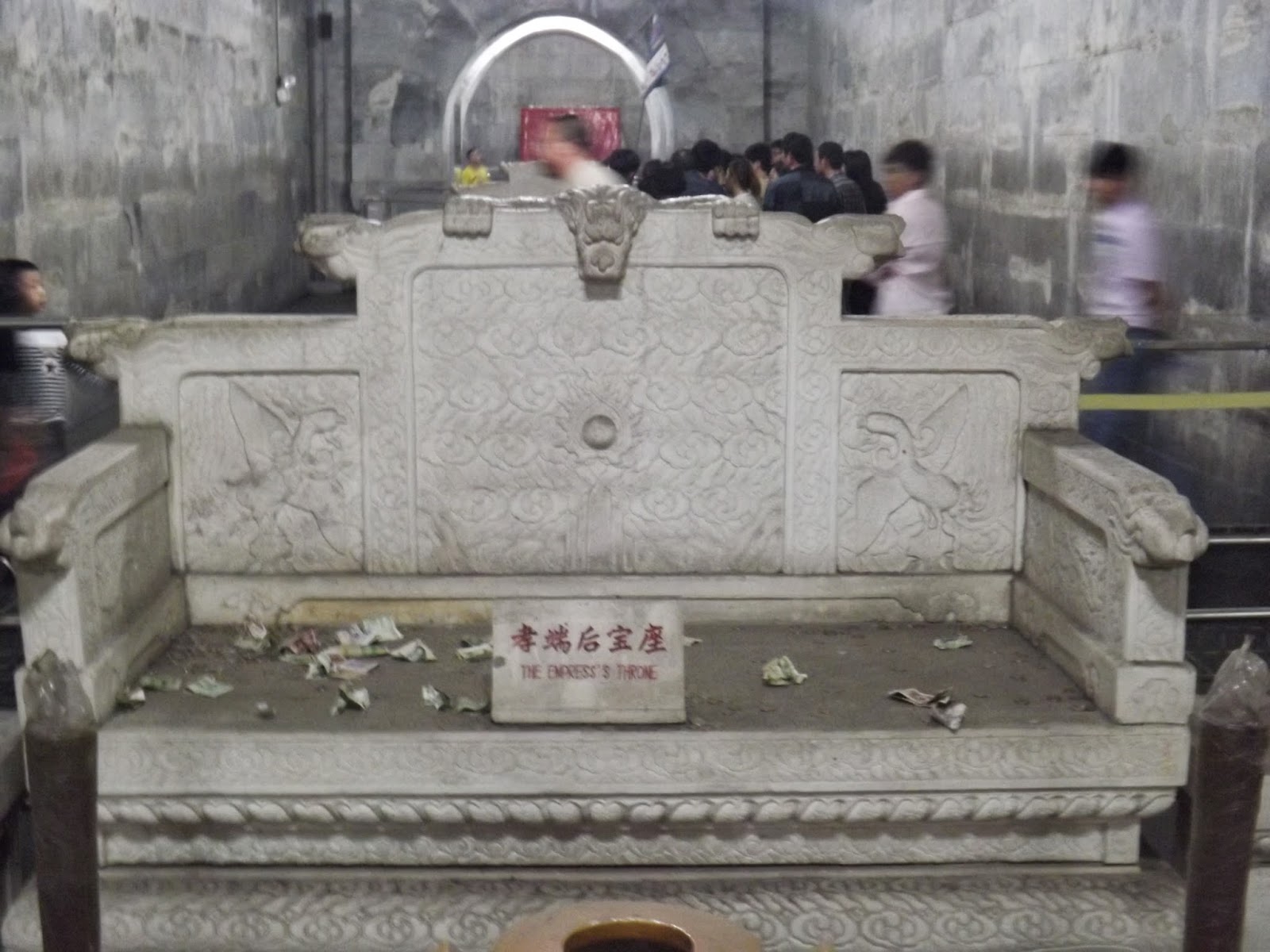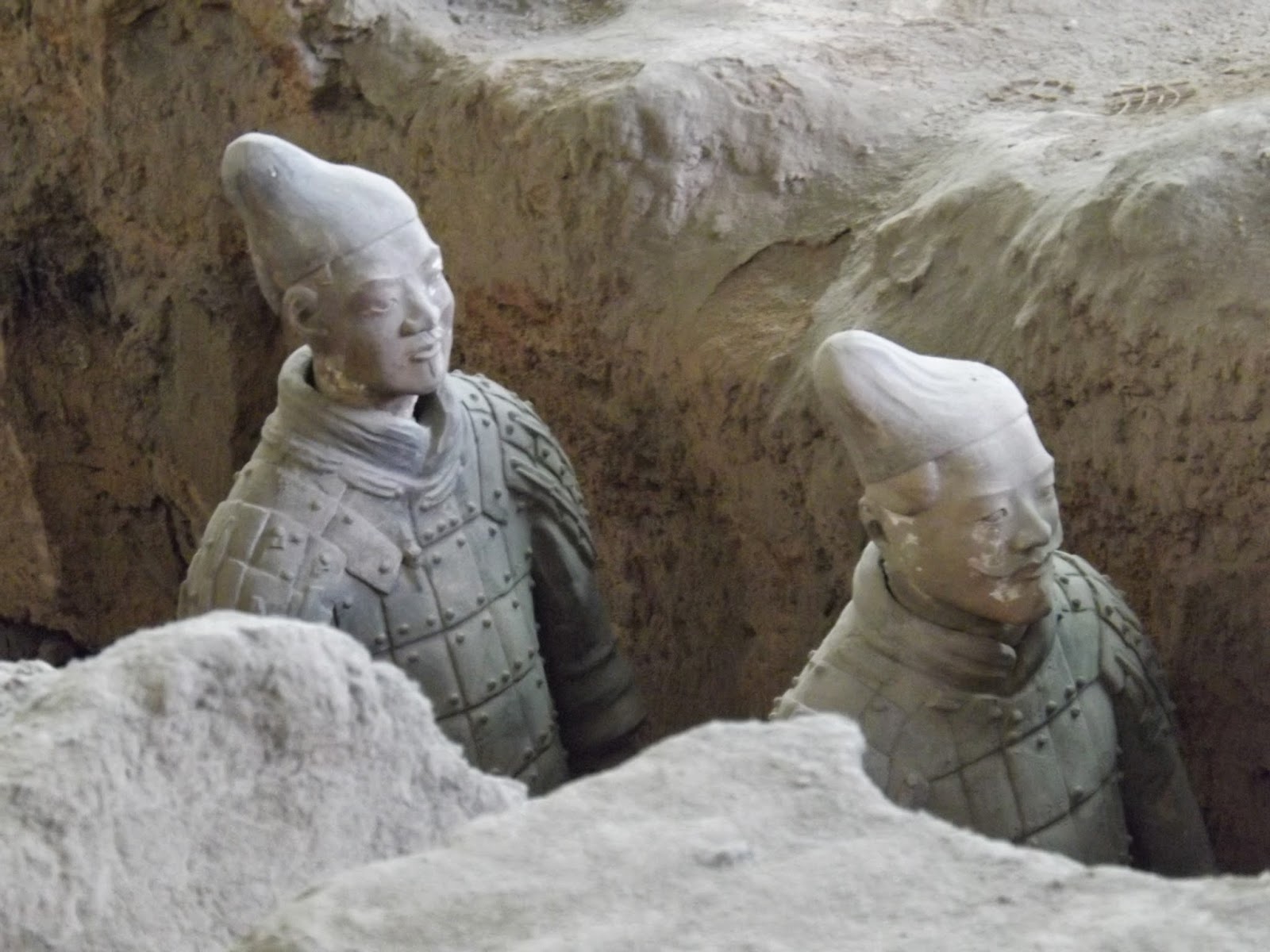Better know to foreigners as “May Day,” Chinese Labor Day
basically serves the exact same purpose as US Labor Day with one key
difference: the common Chinese practice of “making up” days off. Like in the
US, May Day is a one day public holiday (Friday), however almost all businesses
and schools opt to take Thursday off as well. This does not mean they get to
take a four day weekend, but instead have to “make up” that extra day by working
on Sunday. Why they think a six day work week is better than just taking their
one day off, I’ll never understand (TIC), but it’s a very common practice in
China for many public holidays.
Luckily for us, as an American program we have a great deal of
control over our own schedule. Instead of making up the extra day on Sunday, we
just tack it on to the end of the school year. This happens several times over
the course of the year so we will end up being in school about a week longer
than the Chinese side of the school. Well worth it, in my opinion, to avoid six
day school weeks. Also, since it’s essentially Monday for the rest of the country,
we are able to do our weekly grocery shopping without the usual Sunday chaos at
the grocery store. Anyway, for our four day weekend we decided we would knock
out two of China’s most famous attractions: The Great Wall and the Terracotta
Warriors of Xi’an. In retrospect, it may have been a little ambitious to try to
squeeze both of these destinations into one trip. Although we did get them both
in, it was a very busy weekend which included over 20 hours on the train and
several hours in the car at both destinations.
The weekend started immediately after school on Wednesday when
we boarded the train for the five hour trek north to Beijing. We got into town
around 10 PM and, due to an absurdly long line for a taxi, opted to take a black
taxi to our hotel. ‘Black taxi’ is the common name for the shady guys who hang
out like vultures at train stations, airports, and tourist destinations, eagerly
waiting to rip people off when other means of transportation is unavailable. If
you don’t negotiate, you could easily end up paying four or five times what you
would for a legitimate taxi. When we first arrived in China, we took a black
taxi from the airport to our hotel and unknowingly paid 600 RMB when a real
taxi would have probably been about 100 (still better than another couple we
met that week who paid 900 for the same trip!). Luckily, our bartering skills
have greatly improved since then and we were able to talk this guy from 250
down to 150 (only about $25 USD, but still around double what a legitimate taxi
would have charged). We got to the hotel, checked in, and immediately went to
sleep since our tour was set to begin at 7:00 AM the following morning.
Our Great Wall tour was a private tour that we had booked online
the previous week. It was a little pricier than we would have liked because of
the holiday, but included hotel pickup and drop off, lunch, and stops at three separate
destinations, including about an hour on The Wall. First up was the Jade
Carving Factory. Jade is one of the national trademarks of China and this was a
site where they hand carve the gemstone into beautiful jewelry and sculptures.
It was pretty amazing to see some of the things they could carve out of it.
Next we went to the underground tomb of the 13 emperors from the Ming Dynasty
then had lunch at a really great Chinese restaurant. Last, we headed to The
Great Wall for about an hour to walk around on our own. The Wall is a non-stop
cycle of steps up and down, some of which are extremely steep. An hour was plenty
of time to get in a good workout. All of these destinations are a pretty good
distance out of town and with the holiday traffic, made for a full day. We were
dropped off at our hotel close to 8 PM, got dinner at a nearby restaurant, and
went straight to sleep in preparation for another busy day on Friday.
Our train to Xi’an was at 8 AM and we arrived in town just
before 2 PM. We checked into our hotel and immediately went to find a cab to
take us out to the Terracotta Warriors. The excavation site is also a good
distance out of town so it took us almost an hour in the cab. Once we were
there though, there was basically a whole amusement park set up around the
excavation site, including several museums. We were able to walk around see
different things for a few hours, then spent about an hour at the excavation
site and museum. Seeing the intricate details on the hundreds of clay soldiers
and horses was pretty amazing. Once we felt we had taken everything in, we
found a cab back to the city, got dinner, and went to sleep in preparation for
yet another early morning. We would have loved to say in Xi’an for another
night, but since there is no direct train from there back to Kunshan, we had to
first travel to back to Beijing.
By Saturday, we were already pretty exhausted from all the
traveling, so we really just took it easy that day. In our first trip to
Beijing, we found a really cool little back alley with lots of restaurants,
shops, and local bars. There a small hostel there also so that’s where we
stayed all three nights on this trip. We ate lunch at one of the restaurants,
checked out the shops for a bit, and had a few drinks at a couple of the bars. We
turned in relatively early for a Saturday night and got up around 7 for our 9:30
train back to Kunshan.
The two pictures above are from the Underground Tombs of the Ming Dynasty. Below are pictures from the jade carving factory and museum. The details on the sculptures were amazing and it was cool to be able to watch the workers carve different pieces of jade.
We took a cable car up the hill to where the Wall was. There was the option to take a sled back down the hill after you were finished on the wall, but unfortunately the line was extremely long and it was getting ready to rain. We opted for the cable car back down.
It was kind of a hazy day, partially from the typical Beijing smog and partially from the upcoming downpour we were about to experience. We were still able to get some cool pictures and see a long stretch of the wall from the high points.
Inside one of the towers.
From the few pictures above, you can get somewhat of an idea of how steep the steps were. We did'nt expect how much up and down there was to The Wall. After an hour or so, we decided we had seen enough and headed back down.
The main excavation site of the warriors. It was a massive building around the site and there were thousands of soldiers and horses at this one site alone. There were two other buildings like this one, but this was by far the largest with the most intact soldiers. The size of the site and the number of the warriors was pretty overwhelming.
What was really amazing about the warriors is that each one is unique, like a real army. They all have different faces, hair styles and expressions. There was also a whole range of different types, from infantry, to archers, to calvary, each with their own matching uniforms.
I was a little distracted by the Chinese people who were more fascinated with us than with the warriors. Pretty much everywhere we go, people want pictures of the laowai's (literally foreigner in Chinese). Occasionally they will stop us and ask for a picture, but usually they just try to sneak them. These people weren't very sneaky.
Some of the better preserved warriors were placed in the actual museum, along with other artifacts from the excavation sites.


























No comments:
Post a Comment